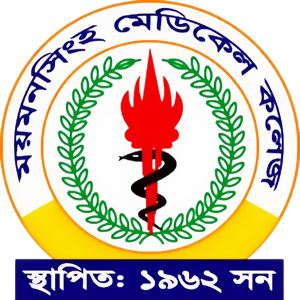Volume 32 Number 3 (2023)
Comparison of Recurrent Laryngeal Nerve Injury during Thyroidectomy with and Without Routine Identification of the Nerve Peroperatively
Mohammed S1 , Ullah MA2 , Saha PD3 , Rahman MA4 , Shawon GM5 , Siddique MI6 , Khan AS7
Mymensingh Med J 2023 Jul; 32 (3): 690-698
PMID: 37391961
Abstract
Thyroidectomy is one of the commonest operative procedures performed in the neck and injury to recurrent laryngeal nerve (RLN) is not uncommon. It results in hoarseness to serious respiratory distress depending on the extent of the injury. The incidence of RLN injury varies widely and is multifactorial depending on the extent of surgical procedures, experience and expertise of the surgeons, nature of the thyroid diseases and a wide range of anatomical variations. Peroperative routine identification of the nerve during thyroidectomy can be a way to prevent injury. Despite recommendation for identification of the RLN peroperatively in thyroid surgery, a debate still exists whether the nerve to be identified peroperatively or not, to avoid its inadvertent injury. The aim of this study was to compare the incidence of RLN injury between two groups where RLN was identified peroperatively in one group and the nerve was not attempted for identification in the other group in thyroid surgery. A comparative cross-sectional study was carried out in the department of surgery and otolaryngology at Bangabandhu Sheikh Mujib Medical University (BSMMU), Dhaka, Bangladesh from June 2018 to November 2019, on patients who underwent elective thyroid surgery. Patients were included in RLN identified group and in RLN not identified group, by individual surgeons’ preference to identify or not to identify the RLN peroperatively. Peroperative identification of the nerve was done by direct visualization. All cases were evaluated for vocal cord palsy preoperatively, during extubation and postoperatively. Patient’s particulars, other parameters and perioperative data were recorded. A total of 80 cases were included in this study, 40 cases (50.0%) in the peroperative RLN identified group and 40 cases (50.0%) in the RLN not identified group. Unilateral RLN palsy was encountered in 2.5% (2 cases) in the RLN identified group and 6.3% (5 cases) in the nerve not identified group (p value 0.192). Transient unilateral RLN palsy was seen in 7.5% (6 cases) of patients; 2.5% (2 cases) in the RLN identified group and 5.0% (4 cases) in the RLN not identified group. And 1.3% (1 case) of permanent unilateral RLN palsy was encountered in this study, which was in the RLN not identified group; there was no permanent palsy in the RLN identified group. We did not encounter any bilateral RLN palsy. There was no statistically significant difference in the incidence of RLN injury between the peroperatively RLN identified group and no attempt to identify the nerve group despite recommendation for peroperative RLN identification in thyroid surgery to avoid its inadvertent injury. However, from this study, we recommend peroperative RLN identification in thyroid surgery to enhance surgical skill.
Keywords: Recurrent laryngeal nerve (RLN), Nerve injury, Peroperative nerve identification, RLN palsy, Transient and permanent nerve palsy
- Assistant Professor
